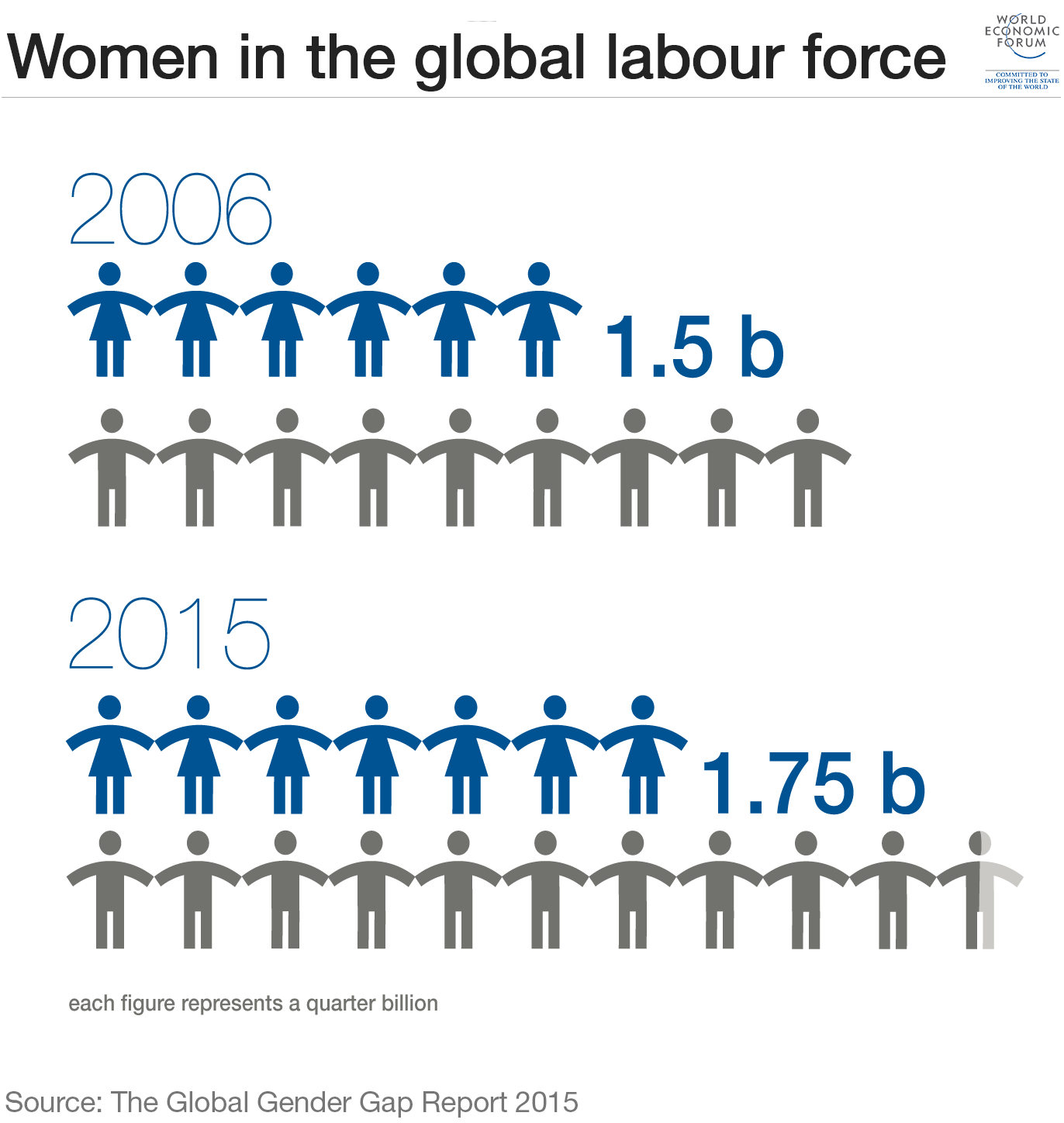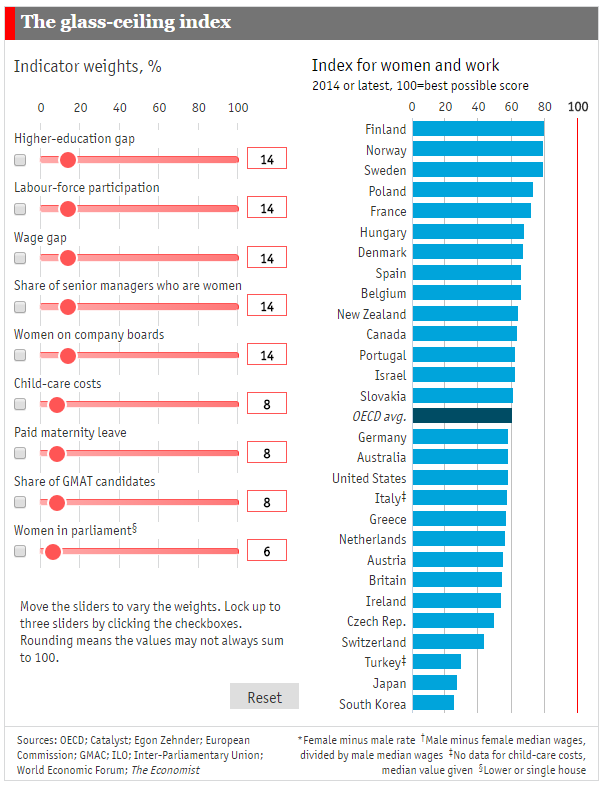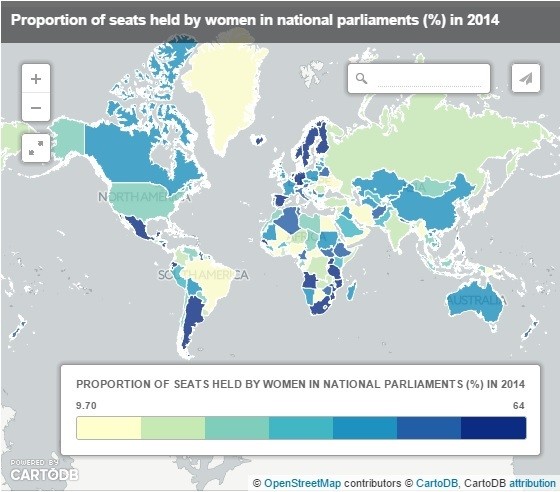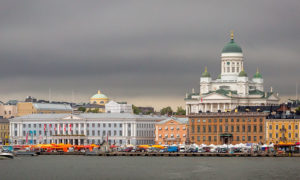(Editor’s note: This post originally appeared on the World Economic Forum. It’s reposted here with the permission of the author.)
By EMMA LUXTON, Formative Content
The World Economic Forum’s Global Gender Gap Report has measured the wage difference between women and men for 10 years, and the 2015 edition highlights women’s progress towards equality over the past decade.
Since 2006, an extra quarter of a billion women have entered the workforce, and the number of female politicians is rising in many countries. But it’s not all good news: the report also shows how much work is required before the world achieves gender equality.

The Economist has created a glass-ceiling index based on data from the Forum’s report as well as from the OECD, the European Commission and other sources, which measures how well OECD countries perform when it comes to equality for working women.
An interactive version of the chart is available here.

Each country’s score is a weighted average of its performance across nine indicators: higher education gap; labour-force participation; wage gap; share of senior managers who are women; women on company boards; childcare costs; paid maternity leave; share of GMAT (Graduate Management Admission Test) candidates; and women in parliament.
Finland comes out top as the best country for working women, followed by fellow Nordic nations Norway and Sweden. These countries score highly in most categories, and take the top spots in labour-force participation. Finland and Sweden have the highest scores for women aged 25-64 when it comes to higher education and the proportion of women in parliament.

Norway’s law requiring 40 percent of public limited company board members be women, which came into force in 2008, is paying off. The country secured the top spot for the most women in boardrooms. However, it ranks considerably lower (15th) for the number of women in senior managerial positions. In this category, the United States takes the top spot with a 42.7-percent share of female senior managers.
The OECD countries with the lowest overall scores are Turkey, Japan and South Korea, with Turkey seeing the lowest labour-force participation, Japan the lowest share of women in parliament, and South Korea the largest gender wage gap. However, when it comes to paid maternity leave, Turkey, Japan and South Korea rank higher than Denmark, Norway, Canada, New Zealand and Australia. In the U.S., women are not entitled to paid maternity leave.
Countries below the OECD average in the overall rankings include Germany, Australia, the U.S., U.K. and Switzerland, the last of which is placed just above Turkey due to the gender gap in higher education, as well as expensive childcare costs.
Over the past decade, not a single country has achieved gender equality. Out of 109 nations covered by the Global Gender Gap Report, 104 have improved their performance, but in five nations the gender gap has widened.
About the author: Emma Luxton is a Content Producer at Formative Content, a content marketing agency based in the U.K. and working with clients around the world to share their insight and knowledge to stakeholders and audiences.














